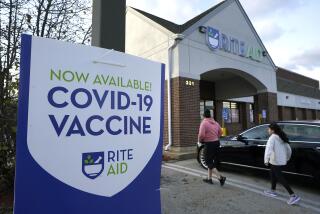Hospital Firm, Insurers to Sell Health Plans
- Share via
Two of the nation’s largest insurance companies and a San Diego-based hospital network have formed a $30-million joint venture to market two rapidly growing forms of health-care plans nationwide.
Provident Life & Accident Insurance Co. of Chattanooga, Tenn., and Transamerica Occidental Life, a subsidiary of San Francisco-based Transamerica Corp., said Monday that the health plans will use the 1,200 hospitals in 44 states that are affiliated with American Healthcare Systems of San Diego. The venture would offer employers prepaid health insurance plans known as preferred provider organizations (PPOs) and health maintenance organization (HMOs). The hospitals would provide emergency medical services, and physicians would be recruited to handle patients’ routine office visits.
By joining with the insurance companies to offer a nationwide network of PPOs and HMOs, American Healthcare Systems’ for-profit subsidiary, American Health Plans Inc., will be joining a wave of companies--nonprofit and investor-owned alike--that recently have branched out into the HMO and PPO business in order to stem the rise in health-care costs.
“The future of providing quality health care in a cost-effective manner is going to depend on organizations like AHS working to design and administer managed medical programs,” said Shawn Raintree, president of American Healthcare Plans. “That allows health-care companies to capture market share at the source. By participating in these changes in the health-care field, we can mold rather than react to developments.”
Raintree said he expects the joint venture to generate up to $3 billion in insurance premiums over the next three years. But he said no agreements have been negotiated with the physicians groups that will treat patients.
HMOs are health-care plans that provide medical service on a prepaid basis in order to control costs. Physician choice is limited to those doctors who contract with the HMO. But whether it is brain surgery or a Pap smear, treatment usually costs an HMO member very little or nothing at all beyond the monthly insurance premium that is paid to the HMO.
PPOs are similar to HMOs. They rate doctors and hospitals and negotiate service discounts with the “preferred providers” in return for quick payment and a lion’s share of a company’s business. However, PPOs allow more flexibility in the choice of doctors, both because the insured is not obliged to use “preferred providers” and because the list of “preferred providers” is usually more extensive than the number of doctors in an HMO.
By the end of the decade, most analysts predict that these two plans will become the dominant forms of medical insurance, supplanting the traditional indemnity or fee-for-service system that some critics say has fueled cost increases in medicine during the last 20 years.
Nationwide, as of June 1 there were 334 PPOs, compared to 68 in 1980, according to the American Medical Care and Review Assn. in Bethesda, Md. More than 14 million people--about 6% of the population--use HMOs, compared to 4.4 million, or about 2%, in 1973, according to InterStudy, a Minneapolis research firm.
Transamerica Occidental is among the nation’s 10 largest life insurance companies with more than $135 billion of life insurance in force. Provident Life & Accident is the nation’s eighth-largest administrator of employee benefits with more than $5 billion in assets.
More to Read
Inside the business of entertainment
The Wide Shot brings you news, analysis and insights on everything from streaming wars to production — and what it all means for the future.
You may occasionally receive promotional content from the Los Angeles Times.










